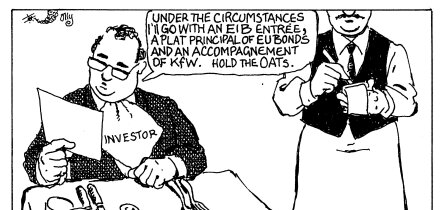Interest rate swap traders and analysts are predicting European swap spreads could tighten further by year end, with Deutsche Bank going as far as saying that 30-year swaps could trade tighter than the 30-year German Bund within the next six to 12 months. Swap spreads are at their tightest level for a year, with the 10-year swap spread trading at 20.5 basis points over the German Bund, in from 28bps at the beginning of October and the five-year tightening to 25.5bps from 31.5bps within the same period. Strategists said the main reason for the predictions is anticipation of massive long-term bond issuance from sovereigns due to looming budget deficits. Although this would initially affect the long-end of the curve, swap rates are usually correlated so the whole curve should tighten. Another reason for tightening is unwinding of long asset swap trades, where investors are long cash bonds and are paying swaps.
Most traders and strategists are predicting a tightening of about five basis points in the 10-year portion of the curve and five to 10bps in the five-year end. Jean Dumas, European head of relative value research at Deutsche Bank in London, is predicting a tightening of three to five basis points in 10-year swap spreads and a narrowing of five-year swaps to 15bps over German Bunds. Meyrick Chapman, derivatives strategist at UBS Warburg in London, thinks the 10-year swap spread could tighten to 15bps over German Bunds and five-year swaps could also narrow to 15bps. The five-year rate is relatively expensive compared with the 10-year and has more room to compress, specifically because more government issuance of that maturity is expected, added Chapman.
Rory Byrne, European fixed income strategist at Schroder Salomon Smith Barney in London, however, argues there is an equal probability of swap spreads widening three to four basis points. This is because most of the sovereign issuance is priced into the curve. Possible widening would be due to investors taking the view that there are solvency problems in Germany's financial sector because swap rates, to some extent, still reflect the market's perception of the financial sector.





